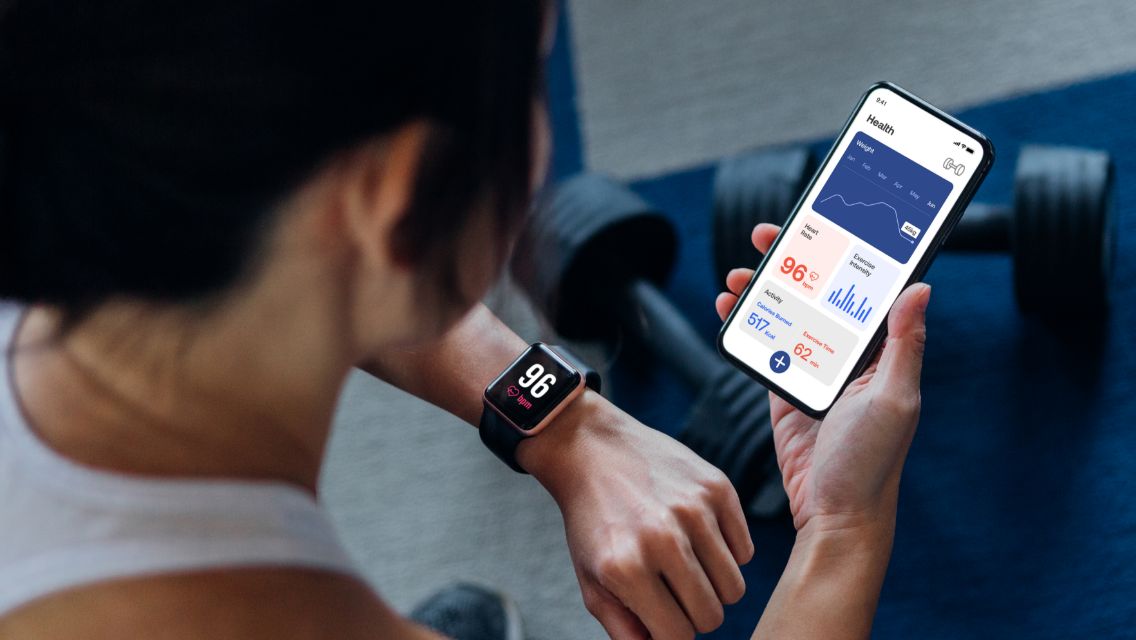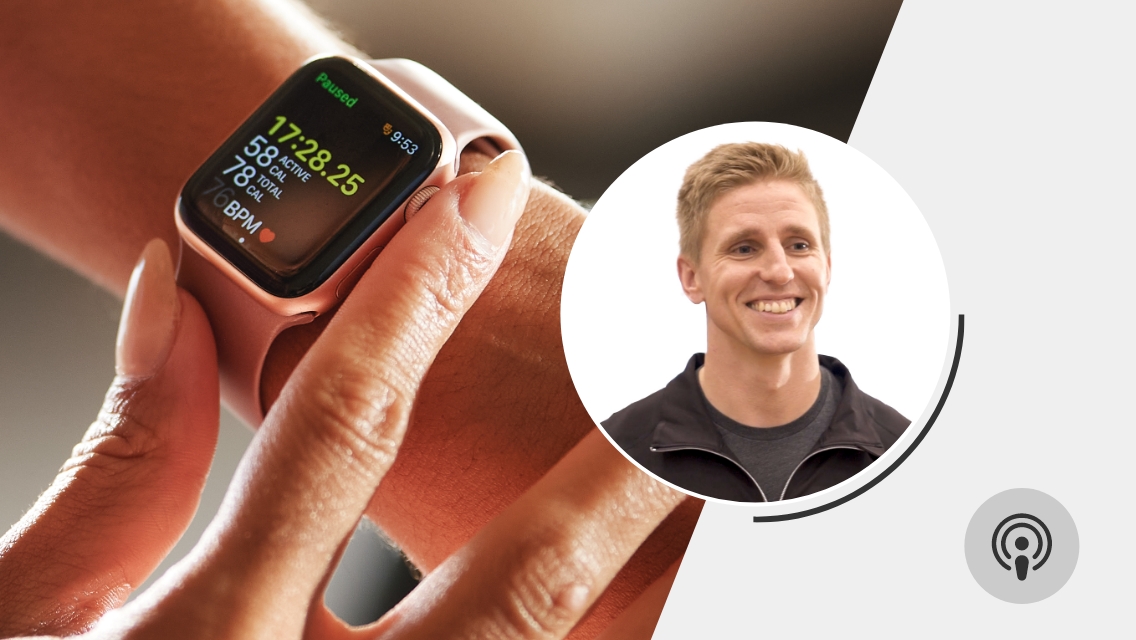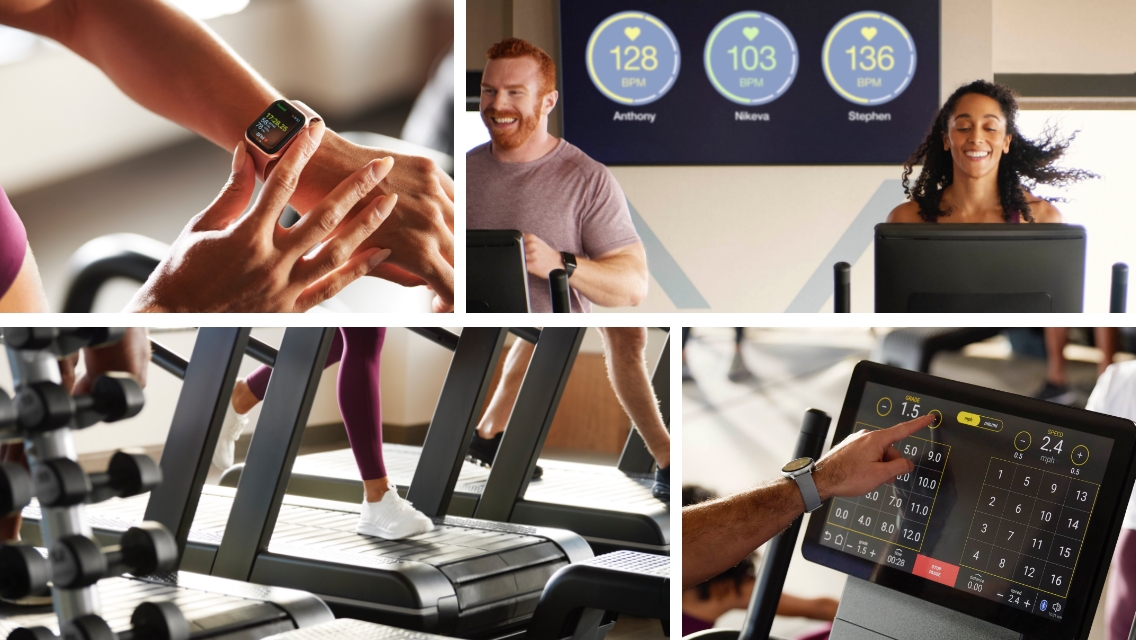How do you determine if your exercise plan is working for you — or not?
When it comes to assessing how well your fitness and nutrition plan is serving you, tracking a variety of metrics and markers helps paint a more complete picture. By considering multiple objective and subjective changes, you can stay better informed about what parts of your program are working well, along with what areas may need to be tweaked.
Many rely too heavily on scale weight, which can be misleading. I always encourage clients to consider assessing the following areas:
- Body composition: In other words, what percentage of your weight is fat mass, lean mass, and water? Are your clothes fitting differently?
- Symptoms: How is your energy? How about your sleep? And digestion?
- Lab values: Are your metrics of internal health — such as blood sugar, cholesterol, and hormone levels — trending in the right direction?
- Workout performance: Are there improvements in your speed, strength, and mobility? Are you using a benchmark workout or benchmark movements to track change?
- Cardiovascular fitness: How well is your heart pumping blood and delivering oxygen across various intensities? How well are you recovering between bouts of exercise?
In this article, I’m focusing specifically on cardiovascular fitness. Because no matter what your goal is, your heart health matters.
Heart disease is the leading cause of death in the United States, with someone dying from it every 36 seconds. Physical activity is a key component to preventing and slowing the progression of heart disease.
The metrics below provide great insight to how well your cardiovascular system is conditioned. Use them as data in addition to conventional metrics, tests, and blood work completed with your healthcare team.
1. VO2 Max
When you exercise, your heart rate increases to deliver the oxygen you’re breathing from your lungs to your muscles. Your muscles use the delivered oxygen (O2) to generate energy in the form of a substance called adenosine triphosphate, or ATP. In this process, carbon dioxide (CO2) is produced and can be exhaled.
The more oxygen your blood can deliver for your body to produce energy in the form of ATP, the better. This is a signal that you have good oxygen uptake, are aerobically fit and trained from a cardiovascular standpoint, and can better handle aerobic activities such as hiking, swimming, pickleball, and more.
Your VO2 max is the highest volume (measured in milliliters of oxygen per kilogram you weigh, per minute) of oxygen that your body can utilize in this process of generating energy. In other words, it’s your oxygen uptake and delivery at the highest intensity you’re capable of — and it’s an important number to track over time.
The ranges of very poor to optimal VO2 max vary by body composition and age. Since women tend to naturally carry a higher percentage of fat than men, and men tend to carry more lean muscle, VO2 max values and target ranges tend to be higher for males.
Age also tends to change both our body composition (due to risk of muscle loss) and how youthful our hearts are. While these factors can certainly be influenced with lifestyle, the target VO2 ranges of what’s poor versus optimal decline a bit as we age.
|
Comparison of Females by Age |
||||||
| Very Poor | Poor | Fair | Good | Great | Optimal | |
| 13–19 | <25.0 | 25.0–30.9 | 31.0–34.9 | 35.0–38.9 | 39.0–41.9 | >41.9 |
| 20–29 | <23.6 | 23.6–28.9 | 29.0–32.9 | 33.0–36.9 | 37.0–41.0 | >41.0 |
| 30–39 | <22.8 | 22.8–26.9 | 27.0–31.4 | 31.5–35.6 | 35.7–40.0 | >40 |
| 40–49 | <20.9 | 21.0–24.3 | 24.5–28.8 | 29.0–32.7 | 32.9–36.8 | >36.9 |
| 50–49 | <20.2 | 20.2–22.7 | 22.8–26.9 | 27.0–31.4 | 31.5–35.7 | >35.7 |
| 60+ | <17.5 | 17.5–20.1 | 20.2–24.4 | 24.5–30.2 | 30.3–31.4 | >31.4 |
|
Comparison of Males by Age |
||||||
| Very Poor | Poor | Fair | Good | Great | Optimal | |
| 13–19 | <35.0 | 35.0–38.3 | 38.4–45.1 | 45.2–50.9 | 51.0–55.9 | >55.9 |
| 20–29 | <33.0 | 33.0–36.4 | 36.5–42.4 | 42.5–46.4 | 46.5–52.4 | >52.4 |
| 30–39 | <31.5 | 31.5–35.4 | 35.5–40.9 | 41.0–44.9 | 45.0–49.4 | >49.4 |
| 40–49 | <30.2 | 30.2–33.5 | 33.6–38.9 | 39.0–43.7 | 43.8–48.0 | >48.0 |
| 50–49 | <26.1 | 26.1–30.9 | 31.0–35.7 | 35.8–40.9 | 41.0–45.3 | >45.0 |
| 60+ | <20.5 | 20.5–26.0 | 26.1–32.2 | 32.3–36.4 | 36.5–44.2 | >44.2 |
How to Measure Your VO2 Max
There are two general ways to estimate your VO2 max, with each progressive method dramatically increasing in accuracy. Note that some fitness trackers also have a VO2 max estimation feature as well.
- Calculation method: This technique uses a calculation that might be directionally helpful, but is known amongst fitness professionals to be inaccurate compared to actual data-driven tests. Here’s how you do it:
- Determine your estimated maximum heart rate: Subtract your age from the number 220 to get your estimated maximum heart rate measured in beats per minute (bpm).
- Determine your resting heart rate: Take your pulse using your pointer and middle finger by gently pressing on the inside of your wrist or on your neck just under the back part of your lower jawbone until you feel your pulse. Set a timer for one minute, and during that minute, try to relax and count how many beats you feel.
- Divide your estimated maximum heart rate by your resting heart rate, and multiply this number by 15 to get your estimated VO2 max.
- Gold-standard method: Certain Life Time club locations offer an Active Metabolic Assessment™ that uses a mask and medical-grade device to determine your oxygen consumption and carbon dioxide exhalation across various exercise intensities. Part of this test includes an estimated VO2 max.
2. Zone 2 Training Intensity Range
When training across various intensities (everything from “this is so easy I could go on for days” to “this is my absolute max effort I can go”), it’s helpful to break up those intensities into a five-zone system, with Zone 1 being the lowest and Zone 5 being the highest. The term “aerobic base” is the dividing line between Zone 1 and Zone 2, and “anaerobic threshold” is the dividing line between Zone 3 and Zone 4.
To determine your zones, read this: “The Active Metabolic Assessment: Discover Your Heart Rate Zones”
One of the biggest benefits to knowing your zones is determining your Zone 2 range, which is the highest intensity in which you’re still burning a majority of calories from fat instead of glucose, while also still removing lactate (which is the “burn” that can signal that you’re no longer burning fat).
This is the sweet spot of intensity that trains your heart to pump more oxygenated blood and nutrients to your body. For added heart-health benefits, Zone 2 builds your aerobic capacity while minimizing stress on the body from exercise. While your breathing in Zone 2 is a little heavier, you should feel fairly comfortable.
As your fitness improves over time, your Zone 2 heart rate increases.
How to Measure Your Zone 2
- Estimation method: Find a general target of your Zone 2 based on a known recent maximum heart rate (the highest possible heart rate you’ve recorded from an all-out, exhaustive effort). Take 70 to 80 percent of that max and use it as your Zone 2 intensity limit.
- Silver method: Use this link to access instructions to perform a silver-method test, which can be done using a piece of cardio equipment with progressively increasing intensities while monitoring your RPE, or rate of perceived exertion (i.e., how hard does the intensity feel). That test can help you estimate your anaerobic threshold, or AT, and Zone 2 is 70 to 90 percent of your AT. If you’re more sedentary, use the 70 percent target. If you’re near your peak fitness, use the 90 percent estimate.
- Gold-standard method: Your local Life Time club will likely be able to offer an Active Metabolic Assessment™ later this year to measure your metabolic function and Zone 2 range with accuracy.
3. Heart-Rate Variability (HRV)
Your heart-rate variability is the measure of time between individual beats of your heart. Contrary to what you may think, more variability between these times is more desirable than consistently timed, metronome-like heart beats.
A higher HRV indicates better cardiovascular fitness, while a lower HRV can indicate that you’re deconditioned, are under stress, are under-recovered from a workout, are fighting an illness, or are tired.
For those who exercise regularly, HRV is a great tool to help monitor cumulative stress load and guide daily decisions on how hard to push in a given workout. When low, it also is a useful indictor that you’re potentially fighting off an illness and could use more targeted recovery and immune support, or are under stress and need to slow down, perhaps with some time in a yoga class and in the sauna.
How to Measure Your HRV
You’ll need an external heart-rate monitoring device (and typically a smartphone app) to measure your HRV, and it’s best done daily, consistently, and in the morning. The more data you collect over time, the more likely it is that your chosen device gets “smarter” and gets to know your patterns by determining a baseline for you, and then giving you a more individualized daily score.




